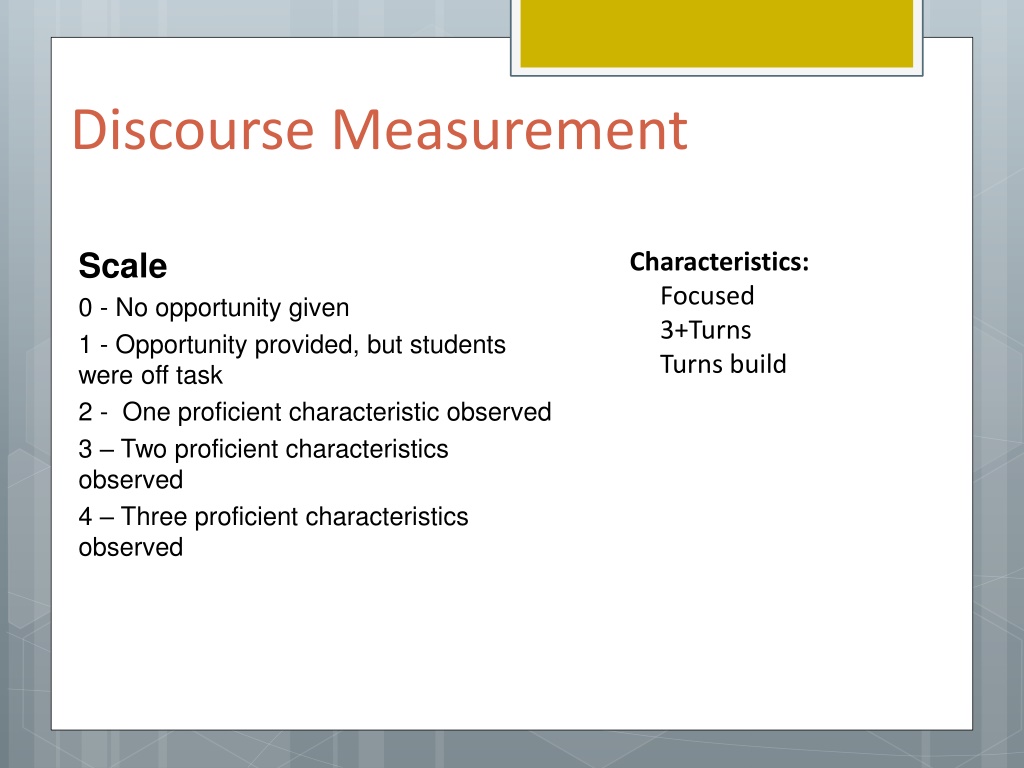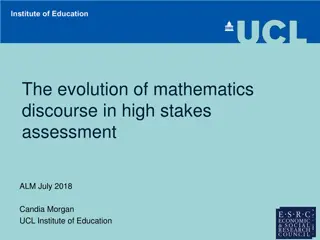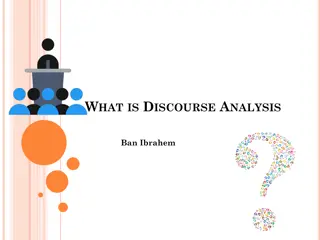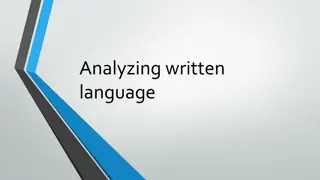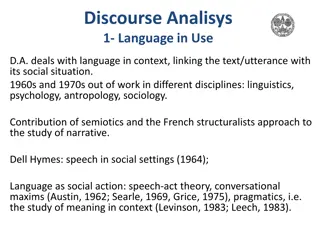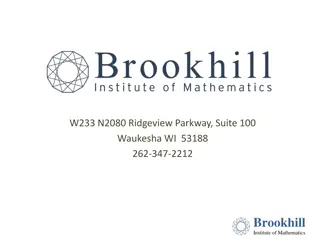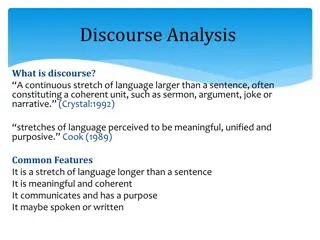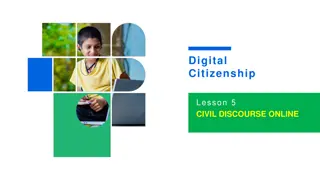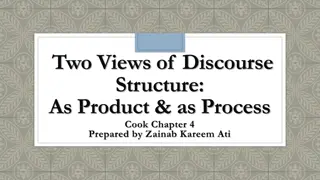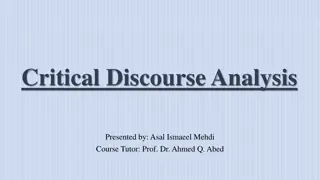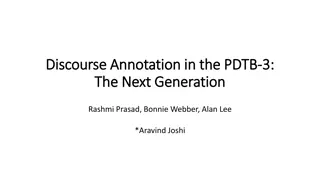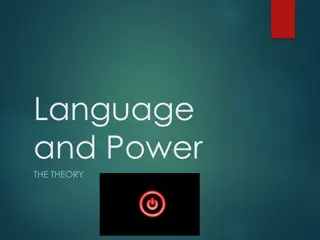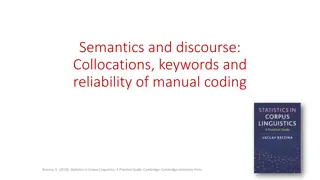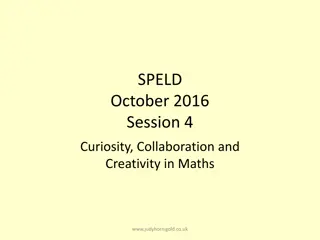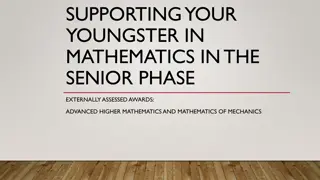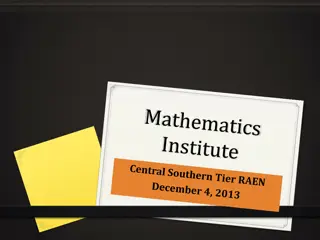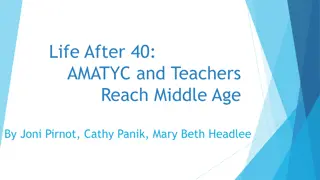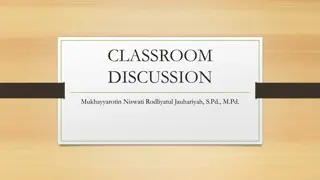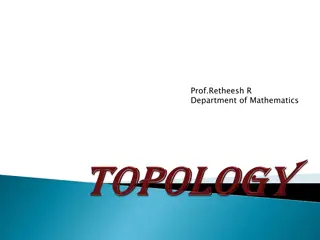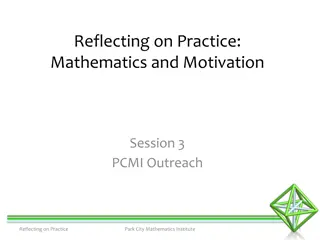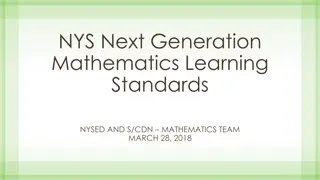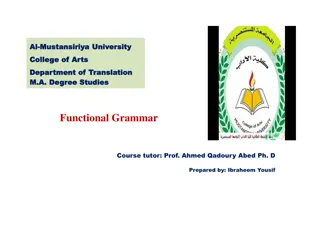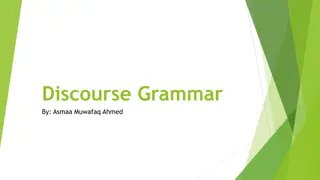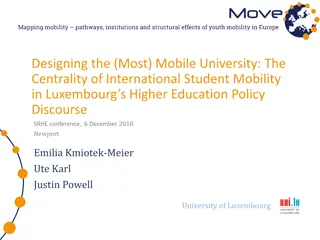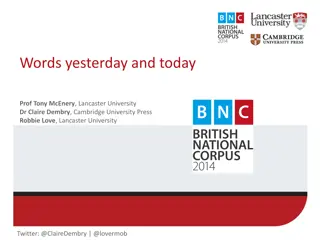Effective Practices for Mathematics Discourse
Utilize the practices of Anticipating, Monitoring, Selecting, Sequencing, and Connecting to improve student engagement and learning outcomes in mathematical discourse. These strategies enable teachers to guide discussions effectively, address student needs, and promote mathematical understanding. By incorporating these practices, educators can enhance discourse quality and peer-dependent talk time, fostering a more focused and productive learning environment.
Download Presentation

Please find below an Image/Link to download the presentation.
The content on the website is provided AS IS for your information and personal use only. It may not be sold, licensed, or shared on other websites without obtaining consent from the author. Download presentation by click this link. If you encounter any issues during the download, it is possible that the publisher has removed the file from their server.
E N D
Presentation Transcript
Discourse Measurement Scale 0 - No opportunity given 1 - Opportunity provided, but students were off task 2 - One proficient characteristic observed 3 Two proficient characteristics observed 4 Three proficient characteristics observed 3 Characteristics: Focused 3+Turns Turns build
Discourse Quality 2.5 1.5
Peer Dependent Talk Time 32% 22%
Goals for 2016 - 17 Discourse Quality: 2.75 40% Peer Dependent Talk Time:
The Five Practices 1. Anticipating 2. Monitoring 3. Selecting 4. Sequencing 5. Connecting
Anticipating What strategies are students likely to use to solve the math task? Where will students get stuck? What strategies are likely to be most useful in addressing the math goal?
Monitoring Keep your mathematical goal in mind. Roaming while observing and listening. Keep track of what you are seeing and hearing. Ask questions to help make students thinking visible, to help students clarify their thinking, and to make sure students are engaged.
Selecting Determine which ideas (what) and students (who) the teacher will focus on during the discussion. Selecting gives the teacher the control over what the whole class will discuss to guide the discussion toward the math goal.
Sequencing Sequencing is the process of determining the order in which to present student work. Order the work in such a way as to make the math accessible to all students and to build a mathematically coherent story line (more concrete and move to more abstract). Keep the mathematical goal in mind.
Connecting This practice is the most challenging. Teachers craft questions that will make the mathematics visible and understandable. This practice is embedded within the other practices. End your lesson with direct instruction using student quotations to solidify the learning goal.
Fourth Grade Tim, Sarah, and Jane each bought the same candy bar after school. Tim ate ? bar. Sarah ate ? her candy bar. Who ate the most of their candy bar? How do you know? Justify your reasoning. ? of his candy ? of her candy bar. Jane ate ? ? of Math goal: Explain why a fraction a/b is equivalent to a fraction (n x a)/(n x b) using a model (4.NF.1)
Anticipate Tim, Sarah, and Jane each bought the same candy bar after school. Tim ate ? his candy bar. Sarah ate ? bar. Jane ate ? the most of their candy bar? How do you know? Justify your reasoning. ? of ? of her candy ? of her candy bar. Who ate Individually, anticipate the solution pathways students might take to solve this problem.
Anticipate Tim, Sarah, and Jane each bought the same candy bar after school. Tim ate ? his candy bar. Sarah ate ? bar. Jane ate ? the most of their candy bar? How do you know? Justify your reasoning. ? of ? of her candy ? of her candy bar. Who ate Turn to an elbow partner and discuss your anticipated solution pathways. Then discuss as an entire table.
Anticipate/Select/Sequence As a table group, select four possible solution pathways. Work together to sequence the order in which you might share the pathways with your class.
Fourth Grade Tim, Sarah, and Jane each bought the same candy bar after school. Tim ate ? ?of his candy bar. Sarah ate ? candy bar. ?of her candy bar. Jane ate ? ? of her Who ate the most of their candy bar? How do you know? Use a model to justify your reasoning.
Selecting/Sequencing Student Work 1. With your elbow partner, examine the student work provided. 2. Determine how you might sequence the solution paths. 3. Collaborate with your table to come to a consensus regarding the most powerful way to sequence these student examples.
Questioning/Connecting Work with your table group. Create a question you might pose based on the student work on the doc cam. Write the question on your white board.
Connecting How might we best connect the thinking shown in the selected pieces of student work? What might be our next step in the lesson to best emphasize our math goal? Math goal: Explain why a fraction a/b is equivalent to a fraction (n x a)/(n x b) using a model (4.NF.1)
Application Continue utilizing the 5 Practices to support mathematical discourse in your classroom. Pay special attention to questioning and connecting. Be prepared to share your experiences at our next meeting.
Remember Standards don t teach, teachers teach Processes are as important as content This work is difficult and unlikely to be done alone!
